All over the world, parents know that a cornstarch bath can be used to eliminate diaper rashes. This is unsurprising given its therapeutic characteristics, which make it a cure-all for most rash-related skin ailments.
Many other parents, on the other hand, are opposed to using any amount of cornstarch to cure their children’s skin problems.
I am actually one of those many parents who have used a cornstarch bath on my baby’s diaper rash. It’s something that works for me, but not all parents will agree that it’s the best thing to do.
So, can a cornstarch bath be used to treat diaper rash? To begin with, what exactly is cornstarch? Cornstarch is a common type of maize-based cuisine.
It can be converted into a variety of forms, including adhesives for use in the manufacturing industry and medicinal applications. Cornstarch is one of the few food ingredients that may be altered to have additional benefits, one of which being healing.
Is it Possible to Treat Diaper Rash With a Cornstarch Bath?
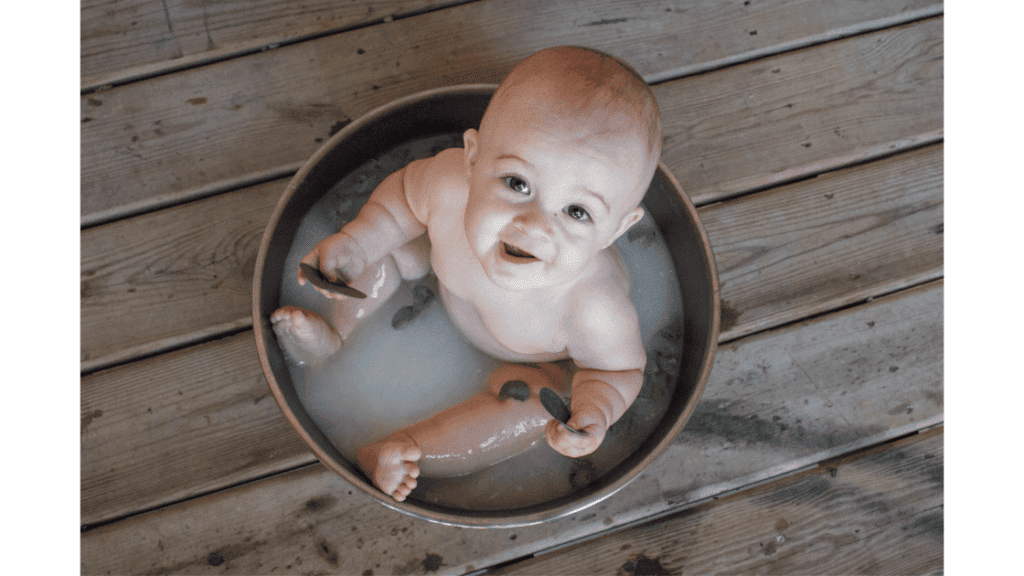
Diaper rash is a common ailment among children today, and many parents are unsure how to deal with it properly when it occurs.
Because you can’t stop your child from soiling his or her diapers, preventing rashes on your baby’s skin is nearly difficult. This is because bacteria that are hazardous to your baby’s skin are produced by the moisture in his poo.
The first thing to remember is that diaper rash can be treated in a variety of ways, depending on the severity of the rash and your baby’s medical condition.
Cornstarch has been shown in medical studies to be a cure for diaper rash, depending on how it is applied. Cornstarch baths are preferred over other treatments because they are safe, fast, and effective.
Applying Cornstarch to Your Baby’s Skin
Cornstarch applied to your baby’s diaper rash reduces the redness on his or her skin as well as the irritation caused by his or her sweat in the diaper.
Normally, any type of infant talcum powder is the first line of defense, but it might cause serious respiratory difficulties. Cornstarch, on the other hand, is a safe alternative, especially when put in the bath.
Another reason why a cornstarch bath is the best option for your infant is that applying cornstarch to his or her skin provides immediate relief from the pain associated with diaper rash.
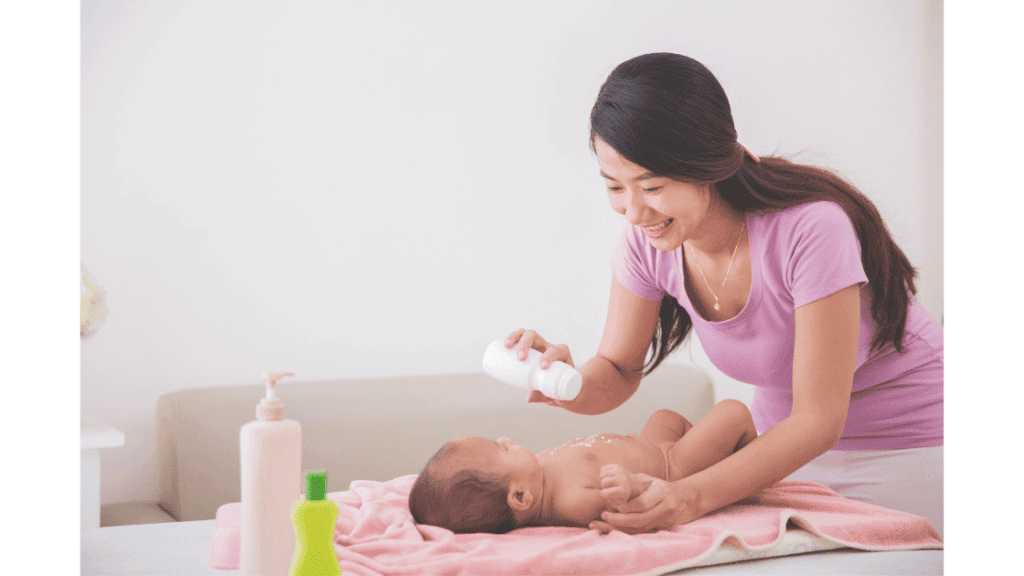
A cornstarch bath also lessens the rash’s severity and prevents it from spreading to other places of the body.
It treats your baby’s rash by reducing skin friction, which is the primary cause of the rash in the first place. Corn starch accomplishes this by keeping the skin dry at all times.
This dryness helps to keep your baby’s skin from being irritated. It is chosen over baby powder because baby powder can combine with ambient oxygen and enter the child’s internal mechanism.
These are just some of the reasons why specialists in the field of child health recommend using cornstarch instead of other diaper rash treatments.
Regardless of the complications that may develop, a cornstarch bath is still the safest technique to successfully treat diaper rashes in your toddler’s body.
Baking Soda and Milk Bath for Diaper Rash
Baking soda is commonly substituted for cornstarch. You can add baking soda to a bath just like you would cornstarch. Baking soda also works to treat diaper rash and can relieve irritation.
You can also add baking soda or cornstarch to a soothing milk bath for your baby’s skin. Milk baths are a great way to soften the skin and help baby relax.
For a milk bath, you can use regular or powdered milk to add to the bath water. Some parents even add essential oil to help a child fall asleep easier. Using powdered milk in a milk bath is the best way to get the milk bath milky.
Cornstarch Uses
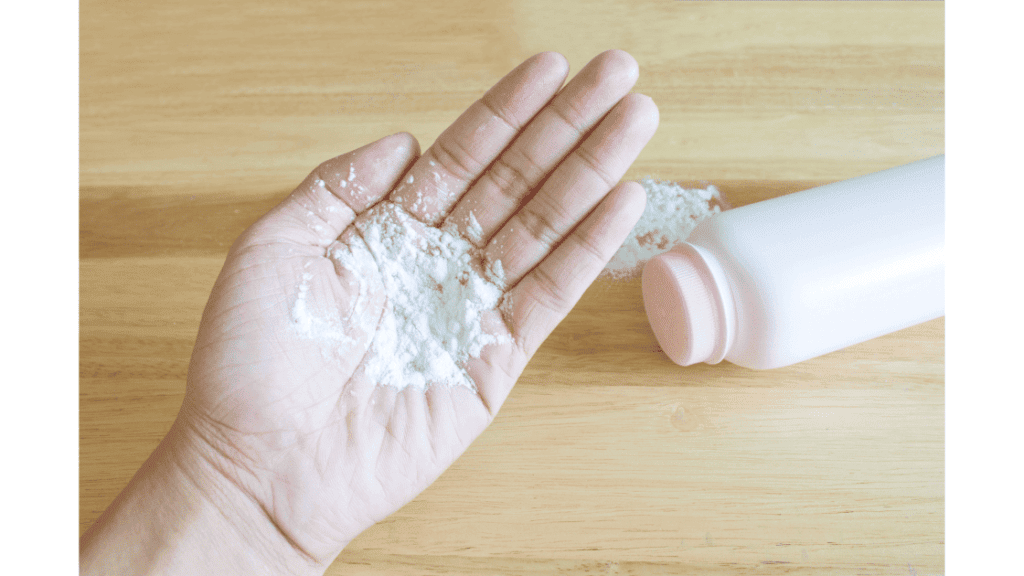
Cornstarch, as previously indicated, has a wide range of applications. The majority of cornstarch’s applications are extremely beneficial to human health. Cornstarch can be used for a variety of purposes, including:
- The potential to be employed as a food additive.
- It can be used to make foods taste better.
- Because it is gluten-free, it can be used as a wheat flour alternative.
- It can be used to give those who are doing rigorous exercises glucose and calories.
- Cornstarch can help you gain weight by boosting the number of calories in your body if you are underweight.
- Oil stains can be removed with cornstarch.
- Cornstarch can be used to absorb moisture and hence remove an unpleasant odor.
- Corn starch can also be used to treat insect bites, particularly mosquito bites.
- Cornstarch can be used to treat skin irritation, allergies, and sunburned skin.
- Rashes caused by a baby’s diapers can be treated with cornstarch. (This is probably the most unique application of cornstarch.)
Cornstarch paste can be used repeatedly to treat repeated instances of infant rash due to its inert nature. Because of its natural nature, it is frequently considered as a preferred alternative over powders and creams.
Cornstarch Bath’s Effect on Diaper Rashes
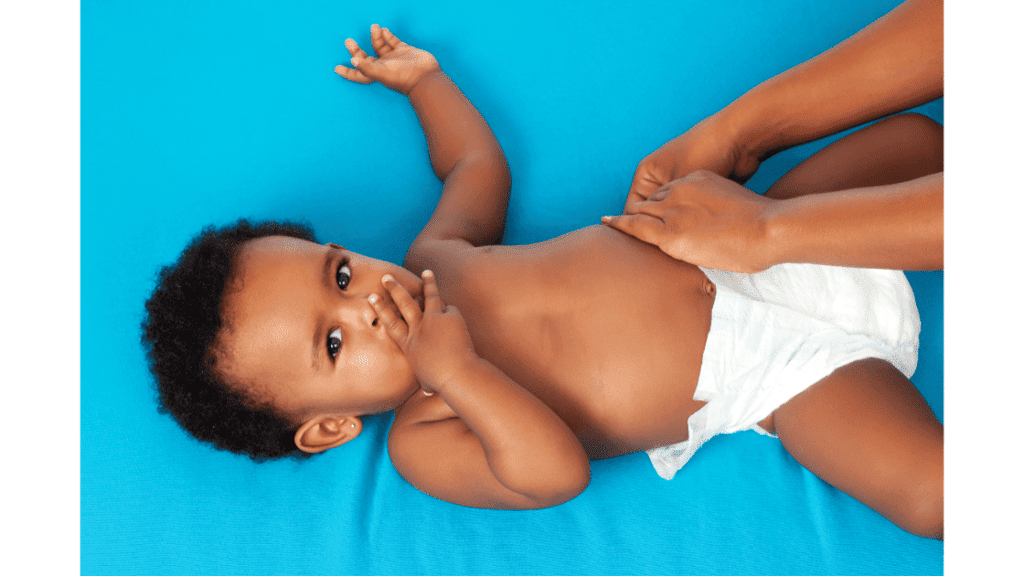
Since cornstarch has been proven to have several benefits, particularly those related to health, it is important to investigate and comprehend the effects of cornstarch on rashes, whether skin rashes or diaper rash.
Rashes are skin illnesses that can be caused by a variety of things. Heat, skin allergies, or immune system issues are all possible causes.
It is a medical disorder that causes the skin to become red and irritated. The most common home remedy for skin rash is to apply lotions or other items such as cornstarch.
These easy remedies should suffice depending on the nature and severity of the rash. However, in the most serious cases, it is best to seek medical advice for a more accurate diagnosis and treatment.
Cornstarch, as opposed to powders, helps to prevent needless friction when applied to diaper rash. It’s also a natural deodorant and recommended by your medical professional.
The Benefits of Cornstarch on the Skin
- It reduces friction on the afflicted skin and so reduces inflammation. This gives the skin a smooth surface.
- By keeping the skin dry, it keeps it smooth. Cornstarch has the capacity to get rid of the roughness and restore the smoothness of the skin by guaranteeing regular dryness in the skin, which is one of the outward indications of skin rashes in both babies and adults.
- It is used to treat allergies and other skin problems.
- It gets rid of greasy patches. Cornstarch is a clear white powder that dissolves readily in water and other solvents. As a result, it can absorb fluids and moisture from the body.
- Cornstarch’s abrasiveness allows it to wash the face.
- Because it is non-flammable, it can be used to treat skin rashes as well as other illnesses.
- USDA Certified Organic 100% Pure Corn Starch
- Batch Tested and Verified Gluten Free
- Tasteless and Odorless
- Thickens effectively, dissolved easily in soups, sauces and gravies
- Vegan, Non-GMO, Gluten Free
Prices pulled from the Amazon Product Advertising API on:
Product prices and availability are accurate as of the date/time indicated and are subject to change. Any price and availability information displayed on [relevant Amazon Site(s), as applicable] at the time of purchase will apply to the purchase of this product.
The following is a list of cornstarch’s harmful effects on the skin
- Cornstarch has a higher likelihood of causing allergic reactions due to the fact that it is a powder obtained from food.
- As it is claimed that too much of anything is undesirable, too much cornstarch on the skin can make it overly dry, exacerbating the rashiness.
- It does not do a thorough job of washing the face. This is most likely owing to the fact that it still contains food components, as opposed to the mineral components found in other factory-made powders.
- Cornstarch applied to a skin rash while sweating might be problematic since it draws bacteria that can harm the skin.
- Cornstarch lacks the ability to form a lipid coating over the skin, which is required to kill skin rashes, making it an inadequate treatment for some skin rashes.
- Do not use corn starch on a yeast infection, as it can make it worse.
How to Use Cornstarch to Heal Diaper Rash
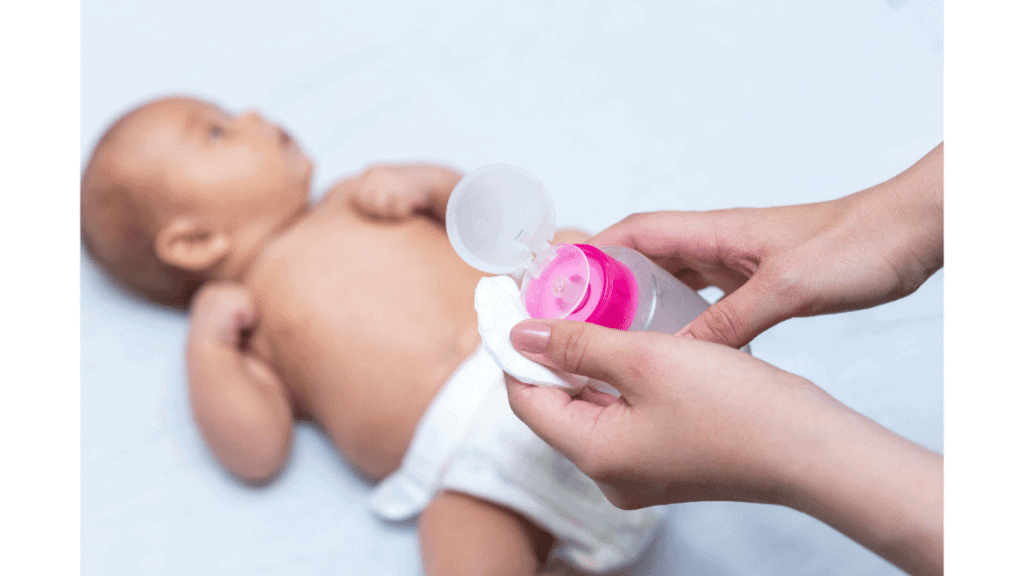
Cornstarch can be used as talcum powder straight on your baby’s skin.
Here are some methods:
- Soak a clean cloth in a cup of warm water for a few minutes. Squeeze out any excess moisture and use it to clean your baby’s bottom.
- Allow your baby’s skin to dry completely before applying 2-3 teaspoons cornstarch. Wait five minutes before forcing your baby to wear a new diaper. This method can be used up to two times per day. Cornstarch can be used to treat diaper rash.
- Combine two tablespoons cornstarch and one tablespoon petroleum jelly in a mixing bowl. Make a thick cream by mixing everything together thoroughly. The cream should be applied to the affected area. Wipe away the cream with a warm moist cloth after 10 to 15 minutes. This mixture can be used twice a day.
- You can also sprinkle cornstarch on the diaper area to keep the skin dry and moisture free.
Mixing cornstarch with coconut oil and vitamin E is another way to use it.
To begin, combine 12 cup cornstarch, 12 cup coconut oil, and a vitamin E cap to produce a paste. The cornstarch paste should then be applied to the affected area and left for 10 minutes. Do not wipe the mixture off just yet.
Finally, wash the skin with warm water and allow it to dry before changing your baby’s diaper. Sprinkle cornstarch to keep the irritated skin dry. Dry skin in the diaper area will prevent diaper rashes.
Conclusion
While it is controversial whether or not using a cornstarch bath to cure your baby’s diaper rash is the best technique to address skin infections in your baby’s body, it is often recommended.
Hopefully, this guide explains why using a cornstarch bath to treat your baby’s diaper rashes is so crucial.

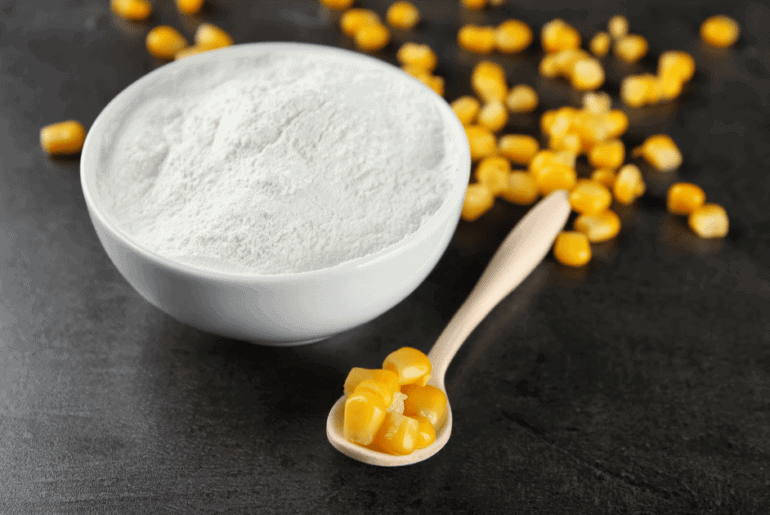

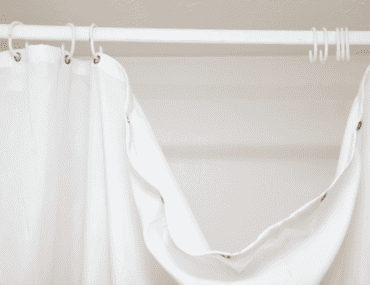
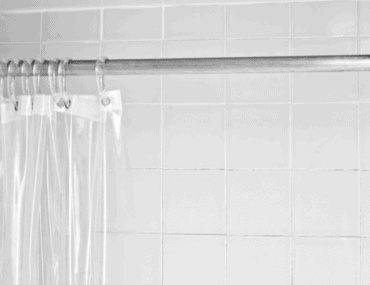

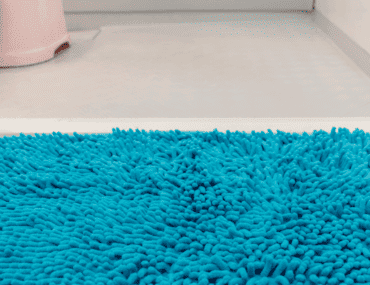
Comments are closed.